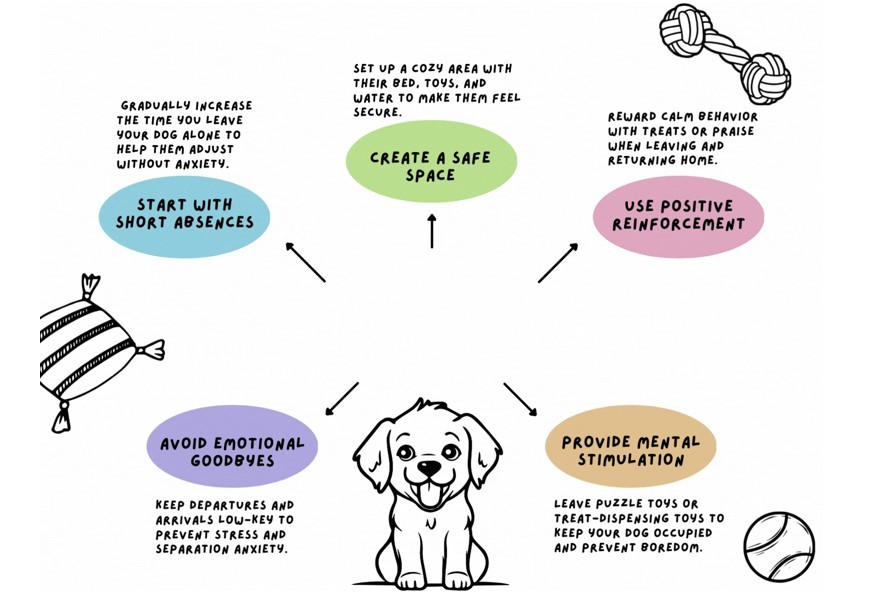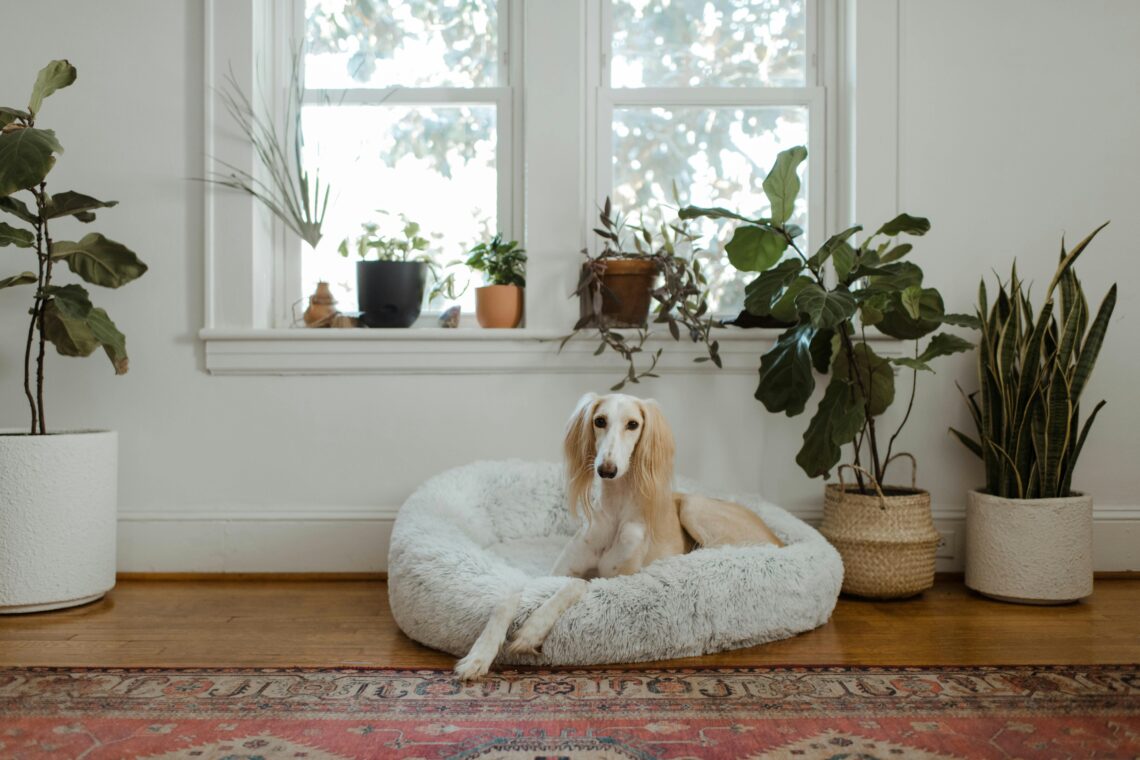The ability to stay home alone is an essential skill for any dog. However, some pets struggle with separation, leading to barking, furniture damage, or even anxiety disorders. Many owners face challenges when their dog panics or behaves destructively in their absence.
Proper training and creating a comfortable environment can help prevent problematic behavior. It is crucial to gradually accustom the dog to being alone using positive reinforcement.
In this article, we will explore effective methods recommended by cynologists to help your pet stay home without stress.
Why Can’t a Dog Stay Home Alone?
Leaving a dog home alone can trigger anxiety, often leading to destructive behavior or excessive barking. This can be a serious challenge, especially for pets that haven’t been trained to be alone from an early age. Understanding the causes of this behavior is key to finding an effective solution.
- Separation anxiety. Some dogs are overly attached to their owners and struggle with being alone.
- Boredom and excess energy. Without proper physical and mental stimulation, dogs may chew on furniture or household items.
- Negative past experiences. If a dog was previously left alone under stressful conditions, it may develop a fear of solitude.
- Improper training. If a dog is always with its owner, sudden separation can cause panic.
- Lack of a safe space. If a dog doesn’t have a designated, comfortable resting area, it may feel insecure and stressed.
Understanding the cause of the issue allows owners to develop the right approach to training their dog to stay home without anxiety.
What Can Help a Dog Feel More Comfortable?
Creating a supportive environment plays a crucial role in adaptation. If a dog feels safe, it will be easier for it to cope with solitude. Additionally, providing engaging activities can help distract your pet from loneliness.
- A comfortable resting area. A designated bed or quiet space helps the dog feel secure.
- Toys and puzzle games. Interactive toys keep the dog mentally engaged while you’re away.
- Background noise. Soft music or a television playing can reduce feelings of isolation.
- Exercise before departure. A well-exercised dog is less likely to display destructive behavior.
Proper nutrition also plays a significant role in a dog’s emotional well-being. Dog food https://masterzoo.ua/ru/catalog/sobaki/korm-dlya-sobak/ rich in essential nutrients helps maintain a stable nervous system, reducing anxiety and preventing excessive restlessness.

How to Train Your Dog to Be Home Alone?
To teach your dog to stay home alone calmly, you need to take a gradual approach. Sudden separation can lead to severe stress, so it’s important to introduce the change slowly. Your dog needs to understand that being alone is temporary and that you will always return.
- Start with short absences. Initially, leave for just a few minutes, gradually increasing the time.
- Avoid emotional goodbyes. Overly dramatic departures and returns can heighten a dog’s anxiety.
- Create positive associations. Provide favorite toys or treats that the dog only gets when you leave.
- Do not respond to barking. If your dog starts barking, do not immediately return, as this reinforces the behavior.
- Use gradual exposure. If your dog panics, start by leaving the room instead of exiting the house right away.
Consistency and patience from the owner will help the dog adjust to being alone without stress.
Additional Tips from Cynologists
Teaching a dog to stay home alone can be done at any age. The key is to maintain a structured approach and avoid sudden changes in routine. If a dog is accustomed to a consistent schedule, adapting to solitude becomes easier.
It is essential to provide both physical and mental stimulation, as this helps reduce anxiety. Training, problem-solving games, and simple commands can shift the dog’s focus to engaging tasks. Additionally, using treats to reinforce calm behavior can help establish a positive attitude toward being alone.
If a dog experiences severe anxiety, consulting a cynologist or veterinarian is recommended. In specialized pet stores like MasterZoo https://masterzoo.ua/ua/, you can find useful products—from food to interactive dog toys—that help dogs handle solitude better.
Training a dog to stay home alone requires patience and the right approach. Gradual conditioning, positive reinforcement, and creating a comfortable environment will help reduce the pet’s stress levels.
The key is not to rush, as the dog needs to understand that solitude is not a threat. By following cynologists’ recommendations, owners can help their pets stay home calmly and avoid anxiety during separation.
Read more lifestyle and pet articles at ClichéMag.com
Images provided by Deposit Photos, BingAI, Adobe Stock, Unsplash, Pexels, Pixabay & Creative Commons




